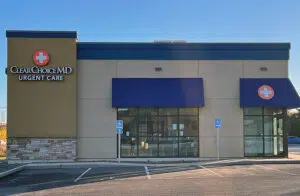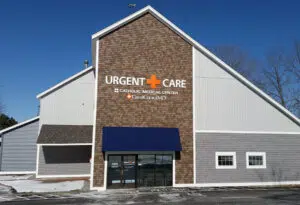
The Northeast is rich in natural beauty. Whether you’re hiking, walking on trails, camping, or just enjoying the great outdoors, it’s important to be aware of poison ivy and know what to do if you develop a rash. Many rashes are mild and can be cared for at home. Some may be more severe; in this case, visiting urgent care for poison ivy treatment is a good choice.
Knowing when to see a doctor for treatment is essential. If you are experiencing a rash and have the following complications, you should visit urgent care:
- Your rash is severe or spread over large areas of your body.
- Your rash is swollen, and the swelling is getting worse.
- Your rash affects your eyes, mouth, or sensitive areas.
- Your rash is oozing pus (white or yellow drainage).
- Your rash isn’t resolving after a few weeks.
- A fever accompanies your rash.
Sometimes, the leaves or stems are mistakenly thrown on a campfire or bonfire. If you think you may have been exposed to the smoke from burning poison ivy and are experiencing breathing problems, call 911 and seek help in an emergency room.
Many cases are mild, and certain symptoms are typical.
Poison Ivy Rash Symptoms
Some people may brush against the plant without having any reaction. For those who do develop a rash, common symptoms include:
- Redness.
- Swelling.
- Itching.
- Blistering.
- Crusting.
Rashes from this plant are often linear because the plant’s leaves brush along your skin. The oil (urushiol) can also be spread to other parts of your body by your hands or contaminated clothing, so the rash may be more spread out. Symptoms of a rash usually appear about 12 to 48 hours after contact with poison ivy, and healing may take two to three weeks.
Poison Ivy Treatment in Urgent Care
ClearChoiceMD Urgent Care can treat poison ivy and many other rashes. When you visit urgent care for treatment, experienced clinicians will diagnose your rash and provide the appropriate treatment. Depending on their assessment of your rash, treatment may include steroid cream for itching and inflammation or an oral steroid for significant swelling and discomfort.
Two other plants found in the Northeast can cause a similar rash: poison oak and poison sumac. Though they look different, they cause similar rashes.
Poison Oak
Poison oak has three leaves but with rounded tips. In the Northeast, it most often grows as a shrub.
Poison Oak Symptoms
Symptoms of a rash include:
- Redness.
- Itching.
- Swelling.
- Blistering.
- Crusting.
Poison Oak Treatment
Poison oak contains the same irritating oil as poison ivy—urushiol. Treatment of a bothersome rash in urgent care is similar.
Poison Sumac
Along with poison ivy and oak, the Northeast is also home to poison sumac. Poison sumac grows as a tree, has seven to 13 leaflets arranged in pairs, and most often grows in swamps.
Poison Sumac Symptoms
The symptoms of a poison sumac rash include:
- Redness.
- Itching.
- Swelling.
- Blistering.
- Crusting.
Poison Sumac Treatment
Your urgent care provider will provide similar treatment for a poison sumac rash. This may include topical or oral steroids or an antibiotic.
If you think you may have inhaled the smoke from burning poison sumac or poison oak and are having difficulty breathing, call 911 for emergency medical care.
ClearChoiceMD Urgent Care: Convenient Urgent Care for Poison Ivy, Poison Oak, and Poison Sumac
We understand that rashes and allergic reactions can be uncomfortable, and choosing the correct treatment can be unclear. Our caring staff can diagnose your rash and provide the best treatment to relieve your symptoms and aid healing.
ClearChoiceMD Urgent Care provides convenient, excellent care for you and your family. If you need urgent care for rash treatment, visit any of our 20 locations across New Hampshire, Maine, Massachusetts, and Vermont.


















